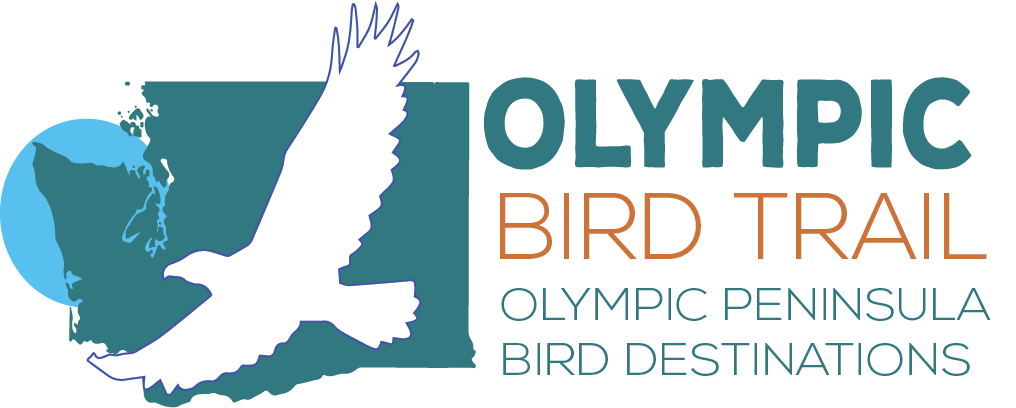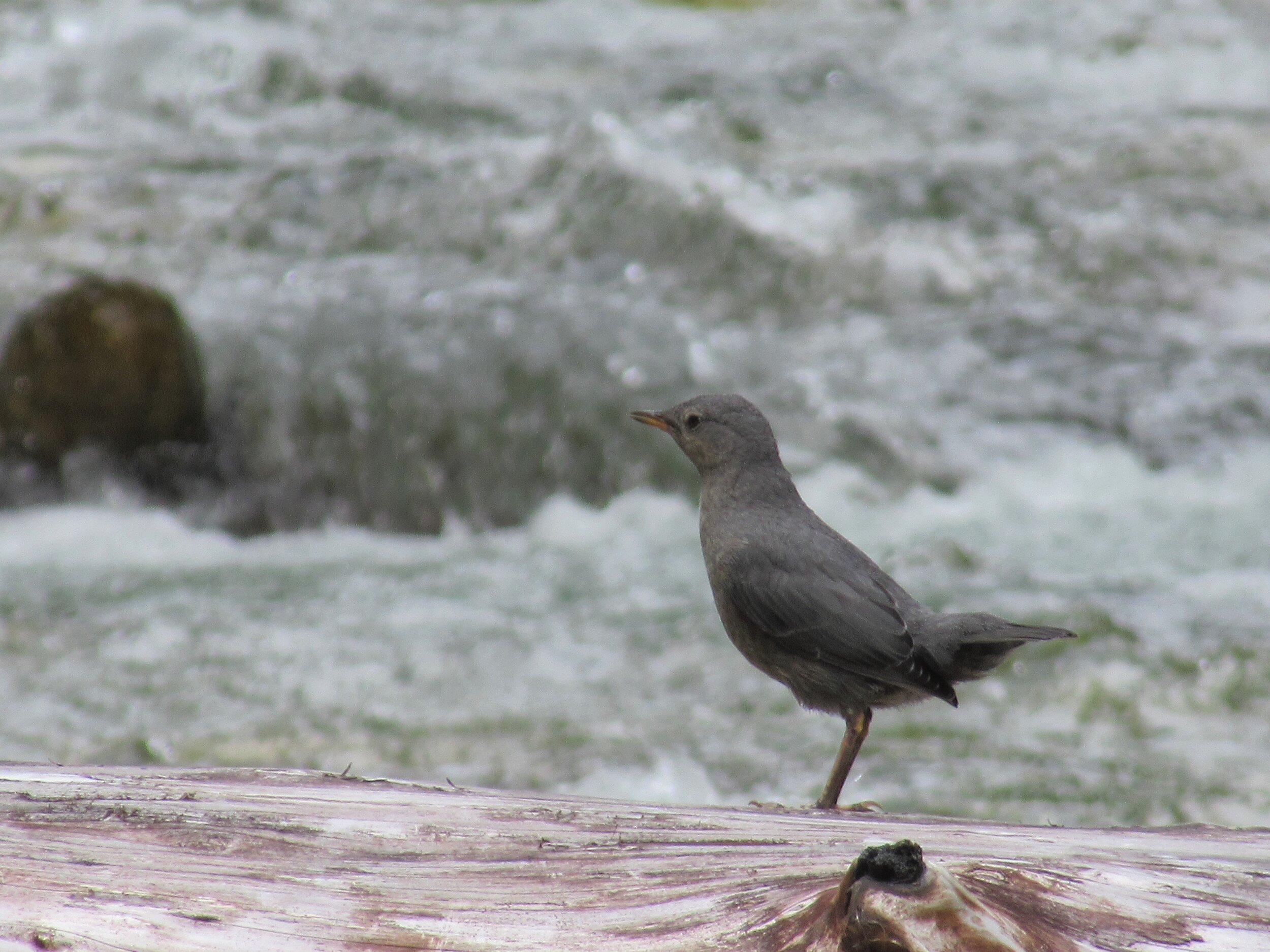Birds of a Feather – Flock together
Stella Wenstob | Story
But what do they say about birders? That is those strange folks who are undeniably stricken with a passion for bird identification. Stereotypically, "birders" are described as strapped to binoculars carrying daypacks full of bottled water, granola bars, odd shaped bird-call whistles and the ever-present color-coded-totally-confusing guidebook.
However, the guidebooks have transformed into featherlight apps for your phone, with intuitive displays and easily accessible information. Specially developed social sharing birder apps, such as iBird and iNaturalist, even allow you to log your sightings and thereby improve scientific understanding of that species or crowd source a particularly difficult ID to get a fellow birder’s input. Birding is much more than banana chips and the Pacific Northwest is home to some very intriguing bird species.
The Audubon Society is a great place to start if you are just dipping your webbed foot in the vast waters of birding. Their website offers a free birding app, intriguing articles on birds and birding. Audobon is supported by hundreds of local chapters (five in the Olympic-Kitsap Peninsula area) that host birding classes, walks, and events, including the longest running bird census in the world – the Christmas Bird Count. Entering its 120th year, the Christmas Bird Count gathers information from volunteer birders across North and South America. It was developed as a replacement for the Christmas tradition of the “side hunt” a competitive pastime amongst hunters for most game taken over the holidays.
With COVID-19 suspending many social activities, going outdoors and communing with birds is a great reason to get out of the house.
Or if the weather is just too nasty, stay in your nest and feather it with avian knowledge. There are many online courses from the Audubon Society (including interactive Zoom lectures, where you can talk to local experts) and the Cornell Lab of Ornithology (they offer pricier accredited bird identification courses, as well as plenty of solid free bird basics [not of the Lynyrd Skynyrd persuasion]).
The Washington Ornithological Society and American Birding Association offers a digital up-to-date version of A Birder’s Guide to Washington. This free volume does not help with actual identification, but provides an exhaustive list of where to find bird species and helps to plan the most productive outdoor birding adventure. As stated above, Birders are passionate nerds, and as such there are A LOT of online resources out there and many of them are tailored to the Pacific Northwest.
If you wish to venture out in this wintery weather, the Mason County is teaming with migratory and year-round resident bird species. Hit the trails and start scanning the skies, vegetation, and water ways.
Pack your binoculars, scope, digital camera, smart phone (with iBird and Audubon maps downloaded) or go old-school with note pad and pencil to record your sightings – whatever you decide to bring, make sure to wear good walking shoes and weather appropriate clothes (and maybe leave the banana chips at home).
Just about every green space, be it a back garden or a state park, holds interesting birding possibilities, but to honor the spirit of road trips and the hallowed practice of making lists, on the following pages is a list of favorite birding haunts with a short summary of the feathered friends you should meet.
Local Birding Locations
The Capital Land Trust Hilburn Preserve
American Dipper | This stocky, robin-sized, grey-brown bird has striking white feathers on its eyelids (obvious when it closes its eyes). It has a sweet chirping call and is America’s only diving songbird. (photo Craig Romano)
The Capital Land Trust Hilburn Preserve (just off Hwy 101 and west of Shelton) offers an easy 0.5 mile loop adjacent to the very active Goldsborough Creek. The wooded area is great for spotting typical Washington woodland birds such as Red-breasted Sapsucker, Hutton’s Vireo, Pacific Wren, Cedar Waxwing, and there are recent rumors (from Anders Price writing for the Black Hills Audubon Society) of an American Dipper in the Goldsborough Creek diving and bobbing for insects. This stocky, robin-sized, grey-brown bird has striking white feathers on its eyelids (obvious when it closes its eyes). It has a sweet chirping call and is America’s only diving songbird. The creek has recently been restored with dyke removals and the presence of an American Dipper is a strong indicator of good water quality – a useful conservancy indicator (akin to the canary of old).
As you leave the Hilburn Preserve head east on Railroad Ave. through to downtown Shelton, turn left (north) on to Olympic Hwy S., then after two blocks, turn right on to Hwy 3 (E. Pine St) to take you along Oakland Bay, to the Bayshore Preserve. Another Capital Land Trust park, Bayshore Preserve hosts the Great Washington State Birding Trail. Here natural oak savannahs border the ocean and the outflow of Johns Creek. Peregrine Falcons have been spotted here sitting in the oaks watching for rodents in the grasslands. Great Blue Herons are also partial to grassland rodents. Watch for waterfowl dipping and diving in the warmer waters of the bay.
2. Mary Theler Wetlands Nature Preserve
Theler Wetlands | Craig Romano Photo
Next stop is the birders paradise: the Mary Theler Wetlands Nature Preserve (just outside of Belfair). To reach it continue on Hwy 3 (destination: 22641 WA-3, Belfair, WA 98528). Situated near the end of the Hood Canal the preserve hosts 139 acres of estuarine environment on the Union River delta. This varied landscape of marshlands, meadows and forests adjacent to the warmer waters of the Hood Canal promotes a great variety of wildlife.
When COVID- 19 restrictions are lessened, the Wetlands Project Center and the native plant demonstration garden are also well worth a visit.
There are five distinct trails at the Preserve, each showcasing a different habitat, and some granting wondrous views of the Southern Olympic Mountains. A favorite is the River Estuary Trail made across broken down dykes and barriers that previously held the ocean out of this historic farmland. Now river otters gambol and explore this new reaching watery world, claiming back the terrestrial shore. Belted Kingfishers loudly defend their territories and Great Blue Herons hunt. Pools also host waterfowl, such as Northern Pintail, Green-winged Teal, and Common Merganser, as well as Black-bellied and Semipalmated Plovers, Killdeer, Dunlin, and Western Sandpipers, dowitchers, Wilson’s Snipe, and Bonaparte’s Gull. Bald Eagles are often seen here. Additionally, the fearsome Northern Shrike are known to winter here. This strange songbird’s main diet is insects and small mammals. It has three specially developed teeth on its beak which allow it to quickly snap the neck of its prey.
Due to its practice of hanging leftover prey on thorns to keep for the next meal, the Northern Shrike has been dubbed the “butcher bird.”
3. Twanoh State Park
Twanoh State Park | Craig Romano Photo
If you back track along Hwy 106 and follow Hood Canal west, Twanoh State Park offers another excellent birding experience. With over 182 acres of forest and shoreline access, this park offers great terrestrial and marine birding opportunities. The 2.5 mile inland trail is a good place to spot Red Crossbills and Brown Creepers. Star waterfowls such as Buffleheads, Common and Barrow’s Goldeneyes, Common Loons, Western and Red-Necked Grebes, Ruddy Ducks, Scoters, Marbled Murrelets, and Greater Scaups busily bob along the water.
4. Skokomish River Area & Hood Canal
Potlatch State Park | Rachel Hansen photo
Keep your eyes peeled for waterfowl as you continue along Hwy 106, passing through Union, now you are in the estuarine delta formed by the Skokomish River. In this area keep a look out for Bald Eagles and even more waterfowl including Mallard, Northern Pintail, Red-breasted Merganser, and flocks of American Wigeons. Merge north on to Hwy 101 and you will find yourself still traveling along the Hood Canal (more waterfowl). Along this highway there are several good birding stops including: Potlatch State Park, Lilliwaup Creek, Eagle Creek, and Jorsted Creek. The pilings of the former log dump at Jorsted Creek are roosting areas for all three varieties of Cormorants. Cormorants are diving birds that primarily eat fish. Since their feathers lack the water-repelling oils found amongst other waterfowl, Cormorants are often spotted with their wings spread out to dry in the sun.
The estuary surrounding the Hamma Hamma River is also a productive birding area with a Great Blue Heron rookery nearby.
Dosewallips State Park is our last mention for this list, but there are many more birding spots along the Hood Canal. This 1000 acre park frames the Dosewallips River and is famous for herds of Roosevelt Elk and, visible from the beachfront, its curious seals. Since it covers such a large area and exemplifies very diverse ecosystems (riverine, estuary, shoreline and mature terrestrial forest) there are a large variety of birds to be encountered. The North Tidal Trail crosses tidal marshes and offers excellent views in the winter of migrant Trumpeter swan populations.
For More Information
The parks and nature preserves of the Pacific Northwest offers many exciting birding opportunities. Birds of a feather flock together, and Birders, they follow close behind. For more information on Olympic Peninsula birding visit olympicbirdtrail.com.
For information on lodging and activities in the area visit Explore Hood Canal.







